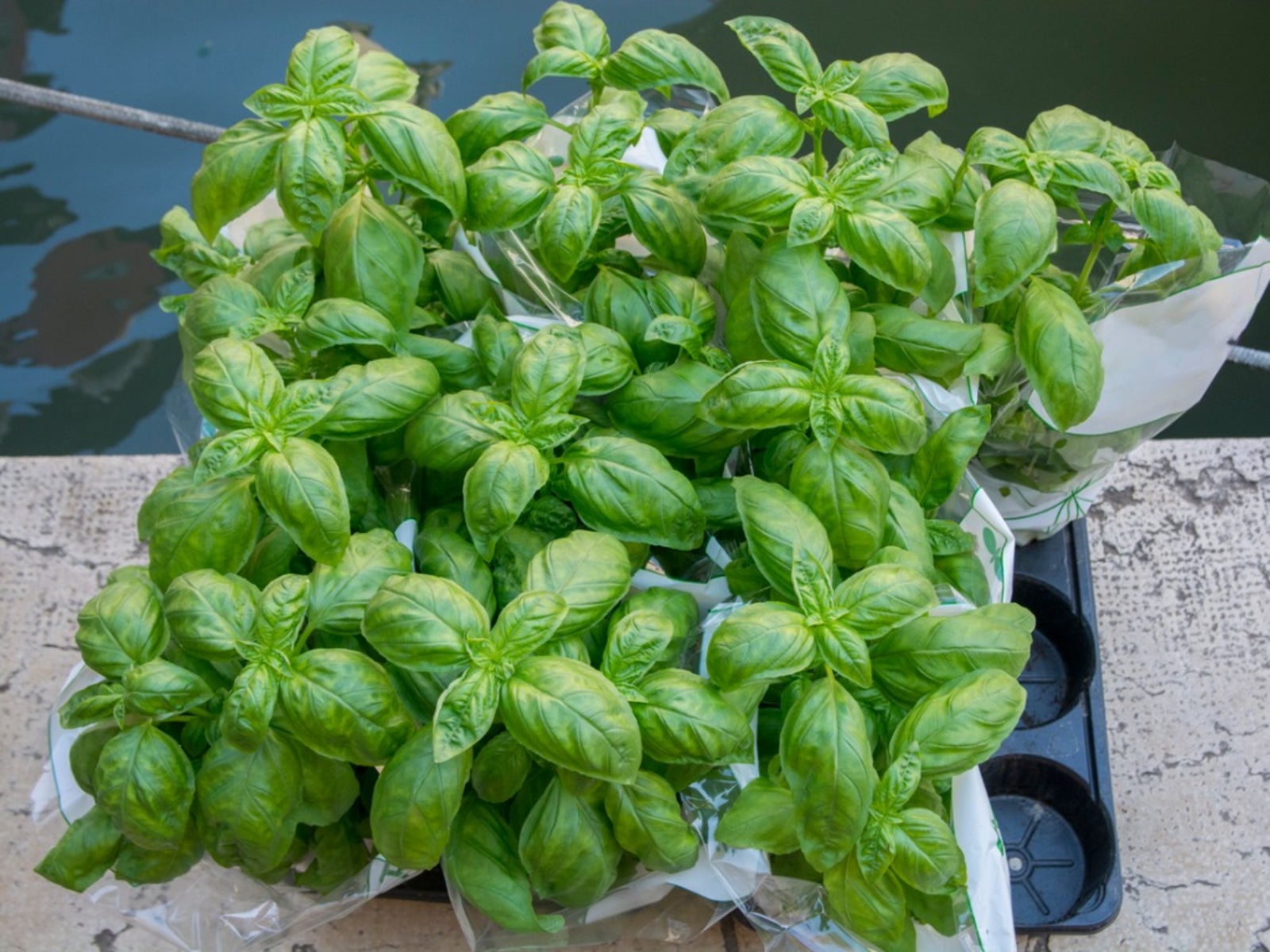How To Grow Grocery Store Basil - Planting Supermarket Basil


Basil is a staple in both indoor and outdoor herb gardens. From its diverse utility in the kitchen to its use as filler and foliage in the cut flower garden, it’s easy to understand basil’s popularity. Though several varieties of basil can be purchased at garden centers or can be grown from seed, they are also commonly found in supermarkets. Learning to repot grocery store basil, as well as propagate it, are just a few ways in which consumers are able to get the most for their money.
How to Grow Grocery Store Basil
Potted grocery store basil plants are appealing for many reasons. With their lush foliage, one can’t help but begin to daydream about their use in his/her favorite recipes. However, though plants within these pots might look healthy and vibrant, all may not be what it seems. Upon closer inspection, gardeners will quickly notice that the pot actually contains several densely packed plants. Under these cramped conditions, it’s highly unlikely that the basil will continue to thrive once it has arrived home.
By removing the grocery store basil plant from the pot and gently easing the roots apart, growers are able to reap the rewards of several new basil plants, as well as improve the overall health of each plant. To repot grocery store basil, select small containers and fill them with a high-quality potting mix. Place the basil’s roots into the pot and gently backfill it with soil. Water the container well and move it outdoors into a sheltered location or windowsill if conditions are not ideal. Continue watering the new planting until growth resumes and the plant becomes well-established. Like many herbs, the more frequently basil is pinched or cut, the more leaves that will be produced.
Once grown to a large enough size, store-bought basil can also be used to take cuttings. Propagating supermarket basil through cuttings is a relatively simple process. New cuttings can be placed into containers filled with soil, or simply allowed to root in a vessel filled with clean water. Regardless of the technique, newly rooted basil plants will grow quickly and further supply growers with the freshest garden basil.
Gardening tips, videos, info and more delivered right to your inbox!
Sign up for the Gardening Know How newsletter today and receive a free copy of our e-book "How to Grow Delicious Tomatoes".

Tonya Barnett has been gardening for 13 years. Flowers are her passion. She has transformed her backyard into a cut flower garden, which she regularly chronicles on her YouTube channel http://www.youtube.com/@tonyawiththeflowers.
-
 Looking For Plants To Give You The Soft And Fuzzies? Try These 5 Fuzzy Leaf Plant Options
Looking For Plants To Give You The Soft And Fuzzies? Try These 5 Fuzzy Leaf Plant OptionsLovers of texture, drama, silver foliage and tactile plants will adore these special sensory garden additions. These fuzzy leaf plant options will leave you all aglow
By Susan Albert
-
 Get Ready For A Summer Of Hummers! Grow These Full Sun Hummingbird Plants and Flowers
Get Ready For A Summer Of Hummers! Grow These Full Sun Hummingbird Plants and FlowersIf you’re lucky enough to enjoy a sunny backyard, make sure you are maxing out on your pollinator opportunities and grow these full sun hummingbird plants and flowers
By Tonya Barnett